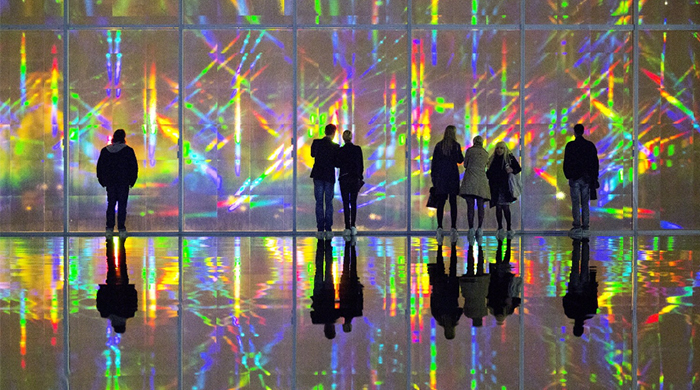Marcel Duchamp, Fountain

A French painter and sculptor whose work was associated with conceptual art, Dadaism and Cubism, Marcel Duchamp is regarded as one of the three artists – along with Pablo Picasso and Henri Matisse – who pioneered revolutionary developments in the plastic arts, as well as painting and sculpture. Duchamp’s controversial Fountain is regarded as a stepping-stone into installation art; a prominent example of Duchamp’s association with Dadaism, he submitted the installation of a urinal to the Society of Independent Artists exhibit in 1917. The show committee however rejected Fountain from the show, insisting that it wasn’t art, which naturally caused uproar amongst Dadaists. Nevertheless, the Fountain marks installation art’s early association with conceptual art.
Kurt Schwitters, The Merzbau

German artist Kurt Schwiteers redefined the meaning of art collages way back when. Famous for his Merz Pictures, Schwitters created his famous Merzbau in which he transformed at least six rooms of his family home in Hanover into sculptural environments. Piecing together this gigantic installation collage, he started working on the first room in 1923, and took ten years to complete it. He then expanded the artwork to other areas of the house until he fled to Norway in the early 1937. Unfortunately in 1943, it was destroyed in a bombing raid.
El Lissitzky, Proun Room

Russian Avant Garde artist El Lissitzky coined the term “Proun,” an acronym for “project for the affirmation of the new” in Russian, according to MoMa. It is here that he transformed two-dimensional works into abstract spaces, when his Proun Room made its debut in 1923 at the Great Berlin Art Exhibition. Lissitzky described the Proun series as “the station where one changes from painting to architecture.”
Lucio Fontana, White Manifesto

Lucio Fontana’s White Manifesto outlined the integral basics to installation art, stating that, “matter, colour and sound in motion are the phenomena whose simultaneous development makes up the new art.” In 1948 he debuted his first Ambiente spaziale a luce nera (Spatial Environment) at the Galleria del Naviglio in Milan. An installation that marked the beginning of his Spatial series (his iconic holes and slashes on the surface of paintings) Spatial Environment was a temporary installation that suspended a huge amoeba-like structure in a darkened room and lit by neon light.
Allan Kaprow, Happenings

American avant-garde artist Allan Kaprow had a notable impact on the development of installation art, through his assemblages and writings. In his Happenings series of performance art, Kaprow attempted to integrate art with life, blurring the lines between life, art, artist and audience. In each Happening (there were about 200 of them), Kaprow experimented with body motion, recorded sounds, written and spoken texts and sometimes even smells – all your basic ingredients for installation art.
Find out more about historical artists on Artsy.
| SHARE THE STORY | |
| Explore More |




